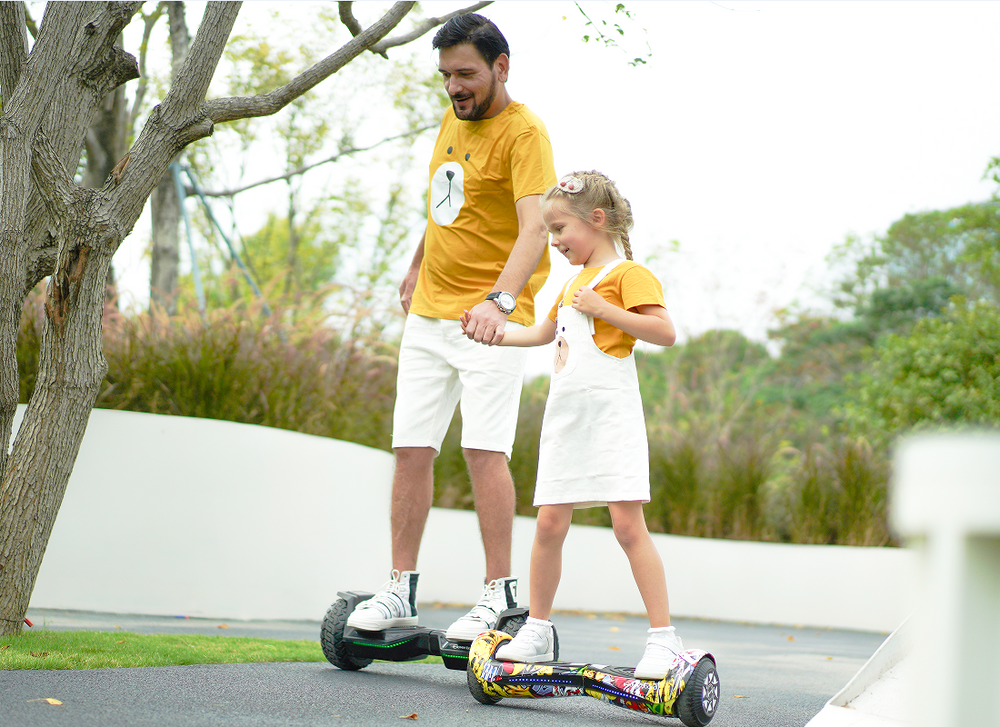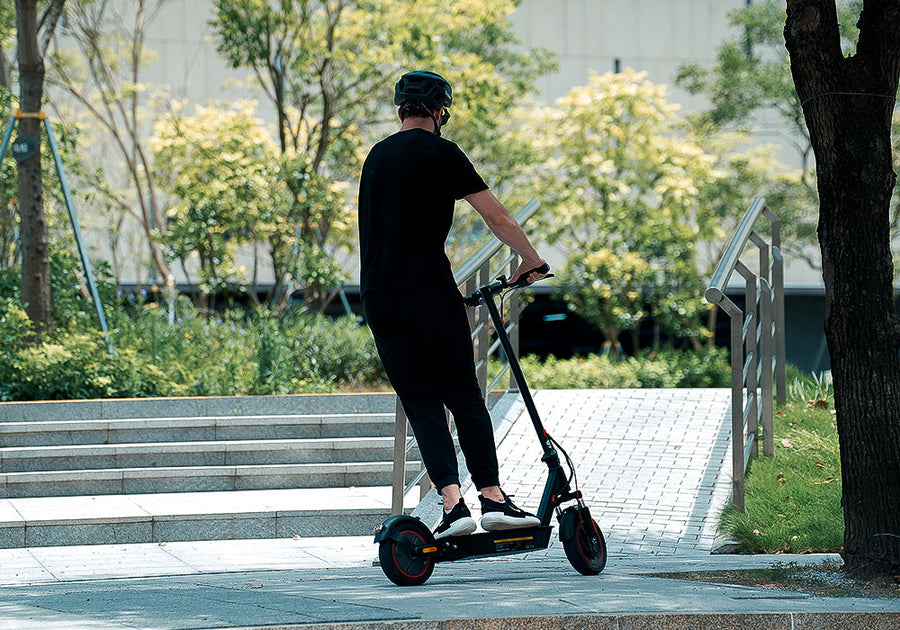
Hoverboard Battery – Everything You Need to Know for Long-Lasting Power
A hoverboard battery is the powerhouse behind every smooth, stable, and enjoyable ride. It determines how far you can travel, how fast your board accelerates, and how reliable your performance remains over time. Understanding your hoverboard battery — from its type and structure to proper care — ensures safer rides and longer battery life.
What’s the Role of Your Hoverboard Battery
The hoverboard battery is the heart of your self-balancing scooter, powering every movement and determining how far and how smoothly you ride. Whether you’re cruising through the city or enjoying a quick spin in the park, the battery directly affects your hoverboard’s speed, range, and reliability. Understanding how it works helps you maintain performance and extend its lifespan.
Most modern hoverboards, including iHoverboard models, use lithium-based batteries because of their high energy density and lightweight design. These batteries are made up of multiple small cells — typically 18650 lithium-ion cells — that store electrical energy and release it steadily as you ride. Inside the battery pack, a Battery Management System (BMS) ensures safety by preventing overcharging, overheating, or short circuits, keeping your hoverboard stable and efficient.
A standard hoverboard battery operates at 36 volts, which provides the perfect balance between power output and riding time. The capacity of the battery, measured in ampere-hours (Ah), determines how long your hoverboard can run on a single charge. For example, a 4.4Ah battery generally offers a ride time of up to two hours depending on rider weight, speed, and terrain.
Types of Hoverboard Batteries
When it comes to choosing the right hoverboard battery, understanding the available types is essential. Different battery technologies can affect how long your hoverboard lasts, how powerful it feels, and how safe it is to ride. While there are several types of batteries used in electric vehicles, lithium-based batteries have become the most common and reliable option for modern hoverboards — especially for iHoverboard models.
Let’s take a closer look at the main types of hoverboard batteries and what makes each one unique.
1. Lithium-Ion Batteries
The lithium-ion hoverboard battery is the most widely used type in today’s self-balancing scooters. It’s known for being lightweight, powerful, and capable of storing a large amount of energy in a small space. Each battery pack is made up of multiple cylindrical cells, most commonly 18650 cells, which are connected in series to reach the hoverboard’s required voltage (typically 36V).
Lithium-ion batteries offer several key advantages:
-
High energy density: They provide more power without adding extra weight, allowing for longer rides.
-
Fast charging time: Most lithium-ion hoverboard batteries recharge fully in 2–3 hours.
-
Good cycle life: They can usually last for 500–1000 charge cycles, depending on usage and care.
In addition, lithium-ion batteries deliver steady performance, meaning your hoverboard maintains consistent power output until the charge runs low. iHoverboard uses only premium-grade lithium cells in all its hoverboards to ensure safe, long-lasting performance for UK riders.
2. Lithium Iron Phosphate (LiFePO₄) Batteries
A newer and increasingly popular option is the Lithium Iron Phosphate battery, often referred to as LiFePO₄. This type of hoverboard battery stands out for its excellent safety, long lifespan, and stability.
Unlike traditional lithium-ion batteries, LiFePO₄ batteries are less likely to overheat or degrade under stress. Their unique chemical composition allows for 2,000–4,000 charge cycles, which can be several times more than a standard lithium-ion battery. They’re also more resistant to temperature fluctuations, making them ideal for riders who use their hoverboards in varying conditions.
Key benefits include:
-
Superior safety: Reduced risk of overheating or thermal runaway.
-
Longer lifespan: Up to four times the cycle life of typical lithium-ion batteries.
-
Stable voltage output: Consistent power throughout the ride.
Although LiFePO₄ batteries tend to be slightly heavier and costlier, they provide unmatched durability and safety — a worthwhile investment for riders who want the best long-term value.
3. Lead-Acid Batteries (Less Common Today)
In the early days of hoverboard production, lead-acid batteries were sometimes used due to their low manufacturing cost. However, they have largely been replaced by lithium-based options because they are much heavier, slower to charge, and have a shorter lifespan.
Lead-acid batteries also have a lower energy density, meaning they provide less power for their size and weight. As a result, hoverboards with lead-acid batteries usually have a limited range and require frequent recharging.
While they are inexpensive, they are not recommended for modern hoverboards because of their limited performance and bulkiness. All iHoverboard models exclusively use advanced lithium battery technology to ensure lighter weight, better speed, and greater efficiency.
Choosing the Right Hoverboard Battery
When selecting a hoverboard battery, always consider three key factors — performance, lifespan, and safety. Lithium-ion and LiFePO₄ batteries deliver the best balance of all three, making them ideal for both daily riders and casual users.
Every iHoverboard hoverboard battery is rigorously tested to meet strict UK safety standards, offering excellent power efficiency and long-term reliability. Choosing a certified lithium battery not only enhances your ride experience but also ensures maximum protection against overcharging, overheating, or electrical faults.
Hoverboard Battery Specifications and Structure
Every high-performing hoverboard depends on a well-engineered hoverboard battery that delivers stable power, long range, and safe operation. To understand how your hoverboard performs so smoothly, it helps to know what’s inside the battery pack and how its technical specifications work together to provide energy efficiently.
Battery Voltage and Capacity
The voltage and capacity are two of the most important specifications that determine how your hoverboard performs.
-
Voltage (V) represents the electrical pressure that drives energy from the battery to the motor. Most hoverboards, including those from iHoverboard, use 36V batteries, which offer the ideal balance between power output and efficiency.
-
Capacity (Ah) refers to how much energy the battery can store. Common iHoverboard batteries range between 2.0Ah and 4.4Ah, with higher capacities providing longer riding distances on a single charge.
In practical terms, a 36V 4.4Ah hoverboard battery can offer up to 15–20 kilometres of range depending on rider weight, speed, and terrain. A higher-capacity battery not only extends ride time but also ensures consistent power delivery even on inclines or uneven surfaces.
Battery Pack Configuration
Most hoverboard batteries are made up of several smaller cells combined to create the required voltage and capacity. These are arranged in what’s known as a series-parallel configuration.
For example, a 10S1P battery pack means there are 10 cells connected in series (10S), each contributing 3.6V to achieve a total of about 36V. This configuration is standard for many hoverboards and ensures efficient power output with balanced cell performance.
Inside an iHoverboard battery pack, each individual cell is securely placed within a durable casing to prevent vibration or damage during rides. The cells are connected with high-quality nickel strips and managed by an intelligent control system that ensures even charging and discharging across all cells.
The Role of the Battery Management System (BMS)
At the core of every hoverboard battery is the Battery Management System (BMS) — the safety brain that keeps everything running smoothly. The BMS constantly monitors voltage, current, and temperature across all cells.
Its main functions include:
-
Overcharge and over-discharge protection: Prevents damage caused by charging too long or running the battery completely flat.
-
Short-circuit protection: Instantly cuts power in case of a wiring fault.
-
Cell balancing: Ensures all cells charge and discharge evenly, extending overall battery life.
-
Temperature monitoring: Maintains optimal performance and prevents overheating.
This system is crucial for ensuring that every iHoverboard battery meets the highest UK safety and reliability standards. It’s what allows riders to charge, ride, and store their hoverboards with confidence.
Hoverboard Battery Lifespan and Performance
The hoverboard battery is one of the most important components that determine how long your hoverboard can run and how well it performs over time. A well-maintained battery ensures steady power delivery, longer riding distances, and reliable operation — while a neglected or ageing battery can significantly reduce your hoverboard’s performance. Understanding how long a hoverboard battery lasts and what affects its lifespan can help you get the most out of every charge.
Average Hoverboard Battery Lifespan
The lifespan of a hoverboard battery is typically measured in charge cycles. One charge cycle means fully charging the battery and then using it until it’s almost empty. Most lithium-ion hoverboard batteries, like those used in iHoverboard models, can last between 500 and 1000 charge cycles, depending on riding habits, environmental conditions, and maintenance.
In practical terms, this usually translates to 2 to 4 years of regular use before the battery begins to show signs of reduced capacity. The more carefully you charge, store, and use your hoverboard, the longer its battery will serve you efficiently.
For lithium iron phosphate (LiFePO₄) batteries, the lifespan is even longer — typically 2000 to 4000 charge cycles. These are among the most durable battery types available and are built to withstand heavy use without losing significant capacity over time.
Factors That Affect Hoverboard Battery Lifespan
Several factors can influence how long your hoverboard battery lasts. Paying attention to these can help extend its performance life:
-
Charging Habits
-
Avoid overcharging. Leaving the hoverboard plugged in after it’s fully charged can slowly damage the battery cells.
-
Don’t let the battery drain completely before recharging. Deep discharges shorten the overall lifespan.
-
Always use the original iHoverboard charger, which is designed to match your battery’s voltage and charging rate safely.
-
Riding Conditions
-
Rough terrain, steep inclines, or carrying heavy loads require more power, which can wear down the battery faster.
-
Smooth, level surfaces and moderate speeds are ideal for maintaining battery health.
-
Temperature and Storage
-
Batteries perform best in moderate temperatures (10°C to 30°C).
-
Extreme cold can reduce capacity temporarily, while excessive heat can permanently damage the cells.
-
When storing your hoverboard for long periods, keep it in a dry, cool place and charge the battery at least once every 2–3 months to prevent self-discharge.
-
Usage Frequency
-
Regular use helps maintain the health of lithium batteries.
-
If left unused for long periods without charging, the battery may enter a deep discharge state, which can make it difficult or impossible to recharge.
Conclusion
Your hoverboard battery is the key to smooth, reliable performance. By understanding its types, lifespan, and how to maintain or replace it safely, you can keep your hoverboard running at its best for years. Always use genuine iHoverboard batteries for maximum safety, efficiency, and long-lasting power. With proper care and the right battery, every ride can be stable, powerful, and worry-free.

































































Still, need help? Contact Us: support@ihoverboard.com
What's the option? Check out the option now!
Leave us a message